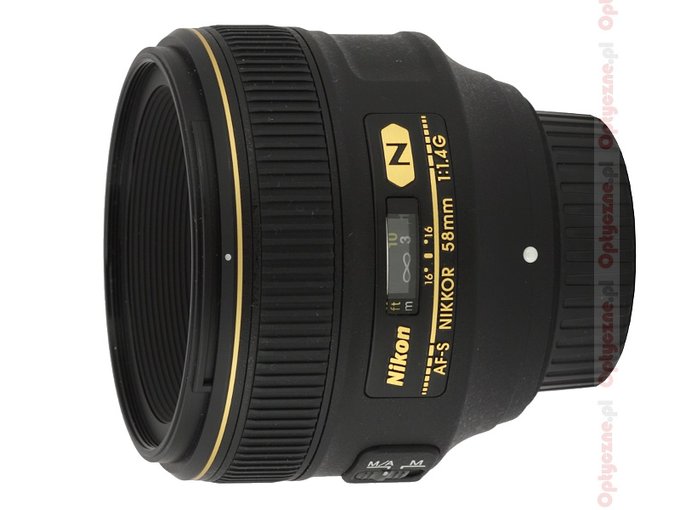Nikon Nikkor AF-S 58 mm f/1.4G
1. Introduction
A bit strange successor it is as the difference in aperture fastness is really conspicuous. Still there are some that claim that currently, with so high and still useful ISO values available in reflex cameras, the difference between f/1.4 and f/1.2 can be negligible. What’s more, the Nikkor is supposed to compete successfully with rival lenses, presented more or less at the same time, such as the Zeiss Otus 1.4/58, the Sigma A 1.4/50 of the Sony Carl Zeiss Planar T* 50 mm f/1.4 ZA SSM.
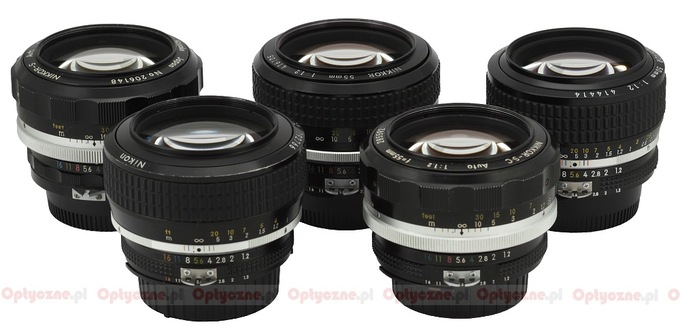 |
Please Support UsIf you enjoy our reviews and articles, and you want us to continue our work please, support our website by donating through PayPal. The funds are going to be used for paying our editorial team, renting servers, and equipping our testing studio; only that way we will be able to continue providing you interesting content for free. |
- - - - - - - - - - - - - - - - - - - - - - - - - - - - - - - - - - - - - - - - - - - - - - - -
As we already mentioned high quality 50 mm devices offered by the Nikon company, let’s describe them in more detail. Officially it stared in December 1965 when the Nikkor-S 55 mm f/1.2 was launched. It featured a classic Gauss system, consisting of 7 elements positioned in 5 groups. Its casing still had the old name of the company so Nippon Kogaku. The lens was in continuous production for several years with some cosmetic changes introduced from time to time. A more important improvement was made in 1972 with the change of the name of the lens into the Nikkor-S. C 55 mm f/1.2. The additional C letter meant using new anti reflection coatings. In April 1976 there were made next meaningful modifications – that time both the design and the optical construction of the lens were remodelled. As a result, the casing became physically lighter and the minimum focusing distance was reduced to 0.5 of a meter. The name shed S.C letters so it was then just the Nikkor 55 mm f/1.2. The production of all variations of that model stopped in April 1978 and the production volume amounted to almost 180 K items.
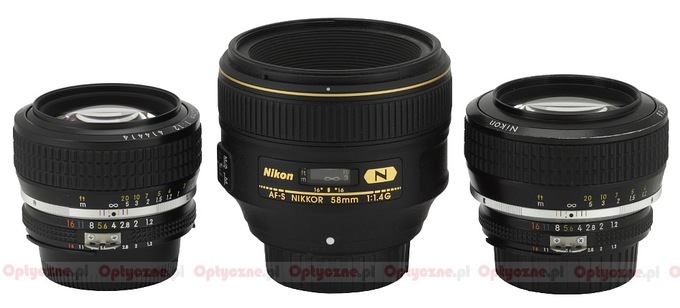 Nikkor 50 mm f/1.2, Nikkor AF-S 58 mm f/1.4G and Noct-Nikkor 58 mm f/1.2. |
The official successor of the 1.2/55 lens was the Nikkor 50 mm f/1.2, launched in July 1978. It was smaller and lighter than the previous model; it also featured a different optical construction (7 elements in 6 groups). In 1981 it underwent major changes – the new AI-s version featured not seven but 9 aperture blades. The lens has been sold in that form up to now – you can currently buy them in many shops for a quite sensible price of about 700 USD
Even before the launch of the 1.2/50 model mentioned in the previous paragraph, in February 1977, another fast 50 mm device in the Nikon line-up was presented - the Noct-Nikkor 58 mm f/1.2 model. Apart from a bit longer focal length the lens stood out because of its front aspherical element. The new construction was based on 7 elements positioned in 6 groups; it also corrected the coma and spherical aberration very well. The AI version, produced from 1977 to 1981, had an aperture with seven diaphragm blades; in 1981 the AIs model featured already an aperture with nine blades. The production of that model was stopped in 1997.
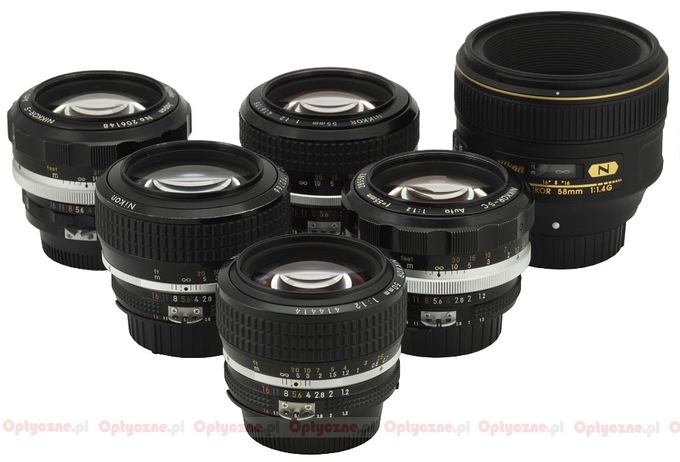 |
When production ceased the price of the Noct-Nikkor was about 1,600 USD; taking the inflation factor into account currently it would cost something around 2,200 USD. Still the lens has already become such a legend that it’s been very prized by different collectors. Nowadays, if a specimen appears on the secondary market, it can be bought for nothing less than over 3,000 USD; a lens in mint condition, with full documentation, can have a price tag between 4,500 and 5,000 USD. The production volume is also an important factor. While about 200,000 specimens were released of both the 1.2/55 and 1.2/50 models there were just 11.5 K Noct-Nikkors available on the market (2.5 thousand in the AI version and 9 thousand in the AIs version).
After that historical outline it’s time for a reality check – let’s find out what the successor of a legend has to show. The Nikkor AF-S 58 mm f/1.4G was borrowed for the testing purposes from the Fotozakupy.pl shop – thank you very much! We also would like to thank Mr. Marcin Górko who pleased us to no end making the old, fast 50 mm Nikon lenses available for our test.
You are also invited to get acquainted with our test procedure, described in the article "How do we test lenses?" If you feel it’s still not enough, please go to our FAQ section where you can find some further explanation.
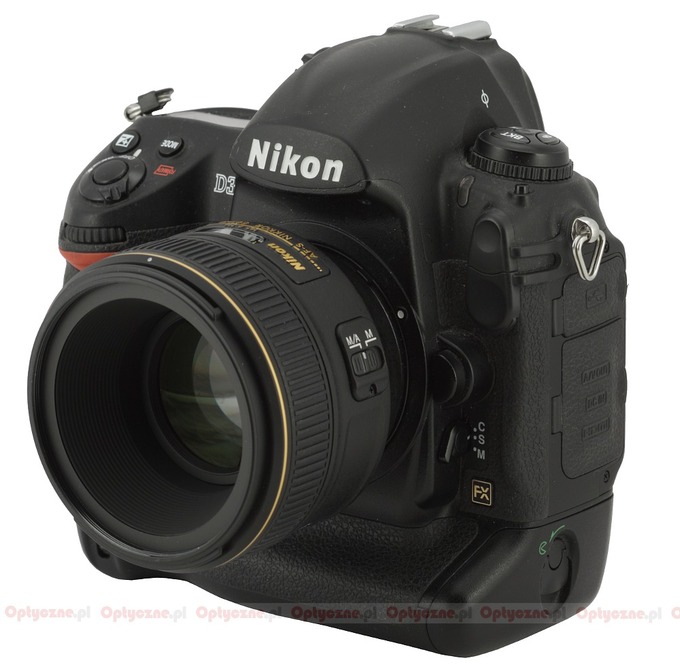 |




